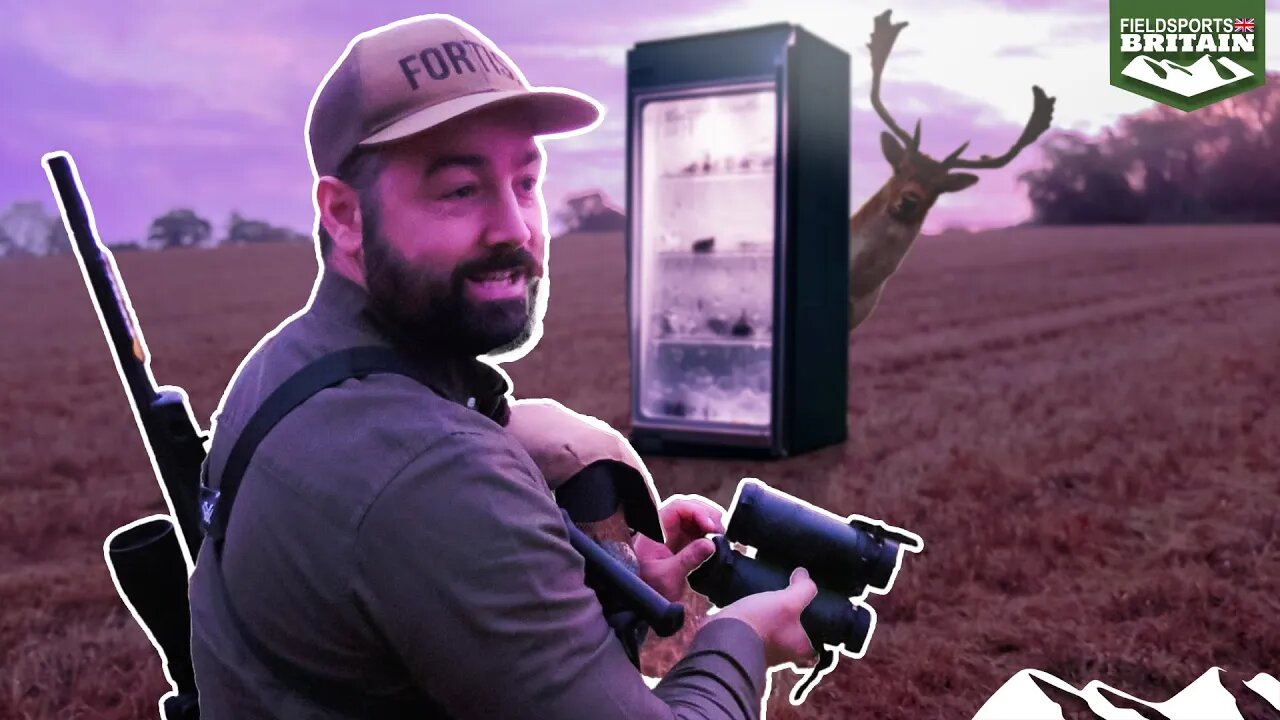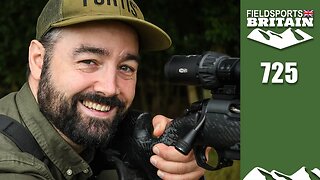Premium Only Content

Cai goes shopping for a fallow
Cai Ap Bryn’s freezers are running low after a hectic summer serving up venison at high profile events like the Game Fair at Ragley. Now he’s after a fallow buck to replenish his stocks of healthy wild meat.
▶ For more information about the Bergara range of rifles – head to https://www.artemisoutdoorsuk.co.uk
▶ Cai Ap Bryn’s catering business https://www.gameandflames.com/
▶ Sign up for our weekly email newsletter https://FieldsportsChannel.tv/register
▶ To watch all of #FieldsportsBritain, episode 725, visit https://FieldsportsChannel.tv/fieldsportsbritain725/
▶ Fieldsports Shop http://fieldsports.shop
▶ Take part in nature. Join the Fieldsports Nation https://FieldsportsChannel.tv/membership
We’re proud to promote enjoyment of fieldsports and the countryside. There are three guiding principles to everything we do on Fieldsports Channel:
▶ Shoot responsibly
▶ Respect the quarry
▶ Ensure a humane, clean and quick kill
Why shoot deer?
There are more than two million red, roe, fallow, sika, muntjac and Chinese water deer in Britain’s countryside and semi-urban areas, the highest level for 1,000 years. Numbers have doubled since 1999, according to the Deer Initiative, the UK government’s deer agency.
Deer are an attractive and an important part of our wildlife. However, they have no natural predator in the UK so numbers must be sensibly and strategically managed to keep them in balance with their habitat and to prevent damage to crops, trees, woodland flora, gardens and other wildlife.
Deer cause £4.5 million-worth (Forestry Commission Scotland) of damage to plantations and other commercial woodlands in Scotland. Crop damage is estimated at £4.3m a year according to DEFRA, with the greatest damage on cereal crops in east and south-west England.
More than 8,000 hectares (Parliamentary Office for Science and Technology) of woodland with SSI status is currently in ‘unfavourable’ or ‘recovering’ condition due to deer impacts such as browsing and fraying. Deer can also influence the variety of wildlife in woodlands and other habitats by altering structural and plant species diversity. According to the University of East Anglia’s Dr Paul Dolman, that has resulted in a 50% decline in woodland bird numbers where deer are present, impacting particularly on nightingales, blackcaps, chiffchaffs and warblers.
Deer are susceptible to Bovine TB and may be responsible for the transmission of TB to cattle. They are also the likely driver behind the UK’s increasing tick population (Scharlemann et al 2008).
Happily, venison is a delicious meat. It is wild, natural and free range, and – almost fat-free – it is one of the healthiest meats available today. Results from research commissioned by the Game-to-Eat campaign (Leatherhead Food International Research 2006) suggest that there are real health benefits to eating game. Venison is high in protein, low in saturated fatty acids and contains higher levels of iron than any other red meat.
-
 25:12
25:12
Fieldsports Britain
1 year agoFieldsports Britain – Fallow for the freezer
1281 -
 1:43:15
1:43:15
Glenn Greenwald
6 hours agoTrump's Tariffs: A Threat to the Neoliberal Order? With Journalist David Sirota; Biden CBP Fabricated Doc to Help Imprison Bolsonaro Adviser? Plus: Israel Support Collapsing | SYSTEM UPDATE #436
135K58 -
 15:04
15:04
T-SPLY
8 hours agoMSNBC Accuses Trump Of "Snatching" Illegal Immigrants For Political Show
24.4K11 -
 2:01:37
2:01:37
Melonie Mac
8 hours agoGo Boom Live Ep 44!
59.7K18 -
 49:41
49:41
BonginoReport
7 hours agoKristi Noem Honors Angel Mom After Son's Brutal Murder - Nightly Scroll w/Hayley Caronia (Ep.23)
126K54 -
 45:22
45:22
Stephen Gardner
5 hours ago🔥WTF! Dan Bongino’s CRYPTIC ARREST message!
76.3K60 -
 1:30:16
1:30:16
2 MIKES LIVE
7 hours ago2 MIKES LIVE #203 Lone Survivor with Donna Axelson and Adam Flynn!
44.3K -
 1:18:49
1:18:49
Kim Iversen
8 hours agoEXPOSED: Inside Tim Pool’s Secret Meeting with Netanyahu | Trump’s Tariff Gamble: Boost for America or Death Blow?
156K269 -
 5:28:29
5:28:29
Biscotti-B23
8 hours ago $1.28 earned🔴 LIVE GETSUGA GAUNTLET 🔥 TRAINING FOR RANKED ⚔ BLEACH REBIRTH OF SOULS
41K1 -
 1:19:00
1:19:00
Sarah Westall
5 hours agoMassive Spiral Structures Found Under Giza Pyramids, Advanced Ancient Societies w/ Jay Anderson
86.9K18